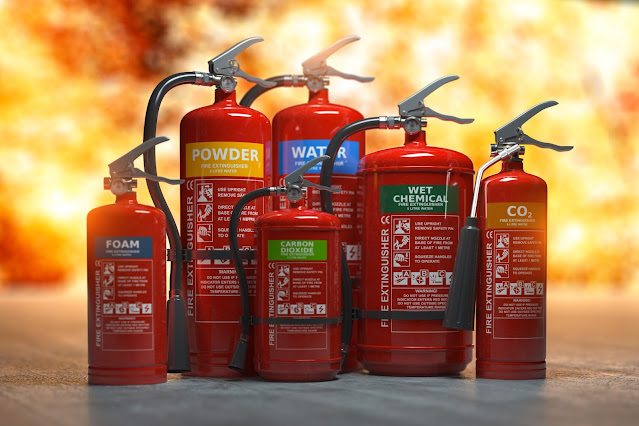Fire prevention and detection are, of course, critical elements, but having effective fire suppression equipment in place to control and extinguish fires when they do arise is also critical for mitigating their damages as effectively as possible. We will explore various types of suppression equipment herein.
Understanding fire suppression
Fire suppression refers to the practice of controlling or quenching an outbreak of flames through various applications of substances or substances applied directly onto them.As different kinds of fire require different suppression strategies, it's vitally important that one understands which one might arise and is equipped for them accordingly.
Fire suppression systems
Fire suppression systems are designed to detect fires and act to extinguish them automatically or aid in their extinguishment. These generally fall under two categories:- Water-based systems: These are the most common and include sprinkler systems and water mist systems. Sprinkler systems use a network of pipes to distribute water when a fire is detected, while water mist systems use water mist to cool the fire and displace oxygen.
- Gas-based systems: These systems use gases, such as carbon dioxide or clean agent gases, which are designed to suppress a fire without damaging electronic equipment. These are commonly used in data centers, server rooms, or areas where water damage needs to be avoided.
Fire extinguishers
Fire extinguishers are essential pieces of firefighting equipment and usually serve as the initial response when a fire breaks out. Different kinds of extinguishers have been designed specifically to tackle particular classes of blazes:- Water and foam extinguishers: Used for Class A fires (ordinary combustibles like wood and paper) and Class B fires (flammable liquids).
- Dry chemical extinguishers: Can be used on Class A, B, and C fires (electrical equipment).
- Carbon dioxide (CO2) extinguishers: Primarily used for Class B and C fires.
- Wet chemical extinguishers: Designed for Class K fires (cooking oils and fats).
- Dry powder extinguishers: Used for Class D fires (combustible metals).
Proper use and maintenance
For any fire suppression equipment to be effective, it must be properly used and maintained. Fire safety plans must include periodic inspection, testing, and servicing by qualified professionals; additionally, training all occupants on how to use their extinguishers correctly is an integral component.Fire suppression systems and equipment are an indispensable element of a comprehensive fire safety strategy, serving not just to control or extinguish flames but to do it in such a way as to minimize damages while upholding safety.
More.........
- Learning from Fire Incidents: Case Studies
- Post-Fire Recovery and Investigation
- Fire Safety in Healthcare and Educational Institutions
- Fire Emergency Communication and Coordination
- Fire Safety Compliance and Enforcement
- Fire Risk Assessment Process
- Fire Safety Inspections and Audits
- Fire Safety Systems Integration
- Fire Suppression Systems and Equipment
- Fire Safety in Industrial and Manufacturing Facilities
- International Fire Safety Codes and Practices
- Fire Safety Measures in High-Rise Buildings
- Emergency Evacuation Planning
- Fire Detection and Alarm Systems
- Fire Investigation Techniques and Procedures
- Firefighting Techniques and Equipment
- Fire Safety Planning and Documentation
- Fire Risk Management Strategies
- Fire Safety Legislation
- Fire Prevention Strategies
- Evacuation Techniques and Strategies
- Fire Safety Roles and Responsibilities
- Emergency Response Planning and Procedures
- The Importance of Fire Safety
- Building Construction and Fire Resistance
- Importance of Fire Safety Training
- Fire Safety in Offices and Administrative Buildings
- Fire Safety in Warehouses and Storage Facilities
- Fire Safety Regulations and Standards
- Fire Science and Behavior
